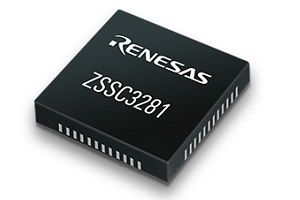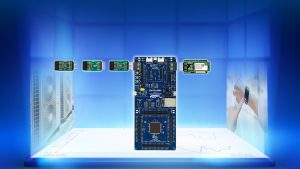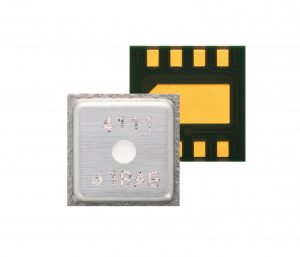Renesas offers new sensors and signal conditioning ICs complementing MCU line

Dusseldorf, Germany. 22 June 2022 – Renesas Electronics Corporation, a supplier of advanced semiconductor solutions, is changing the way designers build sensor connected IoT applications with a range of new solutions targeted at faster design cycles, improved accuracy, and reduced system cost.In addition to the new HS4XXX family of relative humidity and temperature sensors, Renesas is introducing the ZSSC3281 sensor signal conditioning (SSC) IC for highly accurate amplification, digitisation, and sensor specific correction of sensor signals. These new products complement Renesas’ extensive MCU portfolio and embedded AI solutions.
The sensor design process is supported by Renesas’ system design platform that significantly eases the prototyping of IoT systems. The Renesas Quick-Connect IoT system consists of standardised boards and interfaces, enabling designers to quickly and easily connect a wide range of sensors to MCU/MPU development boards. The new system also delivers core software building blocks that are portable between boards, greatly reducing coding requirements. Now, instead of writing and testing hundreds of lines of driver code, designers only need to graphically select their sensor and write a few lines of code. All the integration and setup effort happen behind the scenes, reducing the time to a working solution.

Renesas also provides numerous winning combinations that combine sensors with multiple other ICs to offer customers an elevated design platform that mitigates the design risks and reduces development time.
According to a recent Zion Market Research study, the Global IoT sensors market is estimated to grow at a compound annual growth rate (CAGR) of approximately 27.9%, reaching an estimated [$27.9 billion (€26.52 billion)] by the year 2028.
“Sensing solutions are a critical element in IoT systems, and present numerous design challenges during system integration that can slow development and impact overall system performance,” says DK Singh, senior director of the systems and solutions team at Renesas.“The combination of our sensor technology, signal conditioning expertise, and system solution mindset enables us to deliver customers a design platform that is unmatched by any competitor.”
With more than 20 years’ experience, Renesas has deep and broad expertise in the sensor market. Renesas’ portfolio includes sensor signal conditioners, biosensors, humidity and temperature sensors, light and proximity sensors, flow sensors, and position sensors.
HS4XXX relative humidity and temperature sensors
The new HS4XXX family of relative humidity and temperature sensors provides high accuracy, fast measurement response time, and ultra low power consumption in a small package size, making them ideal for a wide number of applications ranging from portable devices to products designed for harsh environments. More information on the new family is available at renesas.com/humidity.
Key features of the HS4XXX relative humidity and temperature sensors
- Very low current consumption: 0.3µA average for 8-bit resolution with a 3.3V supply
- Ultra-low sleep current: 0.010 µA
- Small 2.5 × 2.5 × 0.9 mm DFN-style 8-LGA package
- Highly accurate relative humidity sensing of ± 1.5% RH
- Temperature sensor accuracy of ±0.2°C typical
ZSSC3281 sensor signal conditioning IC
The new ZSSC3281 SSC delivers highly accurate amplification, digitisation, and sensor-specific correction of sensor signals. It includes a two-channel analog front end as well as an integrated ARM-based MCU with embedded mathematics for sensor signal processing. It targets high-end applications including industrial, medical and consumer sensing. More information on the new SSC is available at renesas.com/zssc3281.
Key features of theZSSC3281 sensor signal conditioning IC
- Highest performance with flexible analog front-end configurations
- Dual-speed mode for highest accuracy combined with fastest update rate
- 2 ADC’s running in parallel with up to 24-bit resolution
- Enables broad use for different sensor elements with multiple characteristics

- Measurement scheduler for optimised performance
- Advanced interrupt and diagnostic functions
- Digital interfaces including I²C, SPI, and One Wire Interface (OWI)
- 4-20mA current loop output, OWI communication via current loop
Demonstration at sensors converge
Renesas will present live demos of its new products and integrated sensor solutions in Booth 323 at the Sensors Converge Exhibition and Trade Show in San Jose, Calif., June 27-29.
Availability
Both the HS4XXX family and ZSSC3281 SSC are available today from Renesas and authorised distribution partners. More information on the Quick-Connect IoT system is available at Renesas.
Comment on this article below or via Twitter @IoTGN
